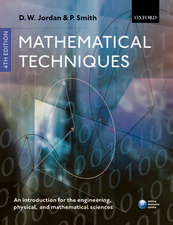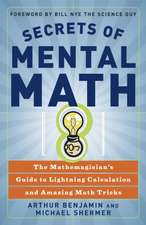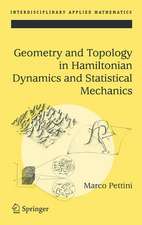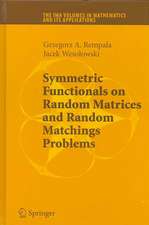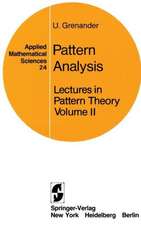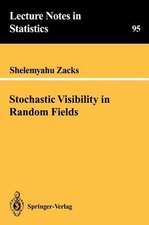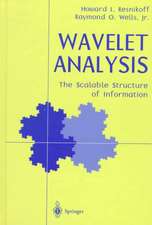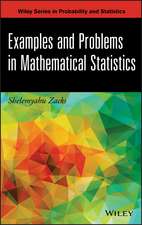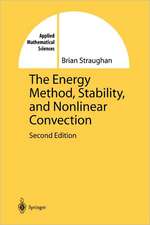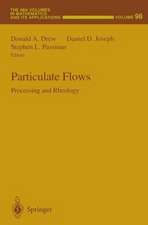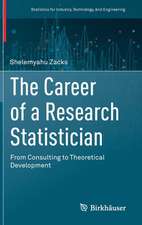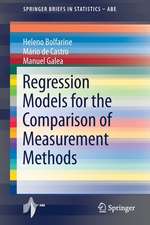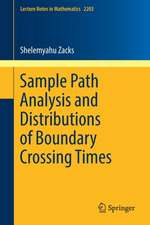Prediction Theory for Finite Populations: Springer Series in Statistics
Autor Heleno Bolfarine, Shelemyahu Zacksen Limba Engleză Paperback – 26 sep 2011
Din seria Springer Series in Statistics
- 14%
 Preț: 679.60 lei
Preț: 679.60 lei - 20%
 Preț: 630.98 lei
Preț: 630.98 lei - 20%
 Preț: 816.45 lei
Preț: 816.45 lei - 20%
 Preț: 1000.85 lei
Preț: 1000.85 lei -
 Preț: 390.84 lei
Preț: 390.84 lei - 20%
 Preț: 697.14 lei
Preț: 697.14 lei - 20%
 Preț: 445.20 lei
Preț: 445.20 lei - 20%
 Preț: 884.71 lei
Preț: 884.71 lei - 18%
 Preț: 1237.14 lei
Preț: 1237.14 lei - 18%
 Preț: 961.82 lei
Preț: 961.82 lei - 18%
 Preț: 956.50 lei
Preț: 956.50 lei - 18%
 Preț: 794.25 lei
Preț: 794.25 lei - 15%
 Preț: 648.05 lei
Preț: 648.05 lei - 18%
 Preț: 1217.10 lei
Preț: 1217.10 lei - 15%
 Preț: 646.11 lei
Preț: 646.11 lei - 15%
 Preț: 647.08 lei
Preț: 647.08 lei - 15%
 Preț: 646.11 lei
Preț: 646.11 lei - 18%
 Preț: 1329.76 lei
Preț: 1329.76 lei - 15%
 Preț: 652.81 lei
Preț: 652.81 lei - 18%
 Preț: 1114.52 lei
Preț: 1114.52 lei - 18%
 Preț: 952.40 lei
Preț: 952.40 lei - 18%
 Preț: 1333.42 lei
Preț: 1333.42 lei - 18%
 Preț: 1561.68 lei
Preț: 1561.68 lei - 18%
 Preț: 1231.47 lei
Preț: 1231.47 lei - 15%
 Preț: 513.64 lei
Preț: 513.64 lei - 18%
 Preț: 893.71 lei
Preț: 893.71 lei - 15%
 Preț: 649.87 lei
Preț: 649.87 lei - 18%
 Preț: 1007.65 lei
Preț: 1007.65 lei - 18%
 Preț: 1111.67 lei
Preț: 1111.67 lei - 18%
 Preț: 1223.70 lei
Preț: 1223.70 lei - 18%
 Preț: 892.74 lei
Preț: 892.74 lei - 18%
 Preț: 913.26 lei
Preț: 913.26 lei - 18%
 Preț: 943.88 lei
Preț: 943.88 lei -
 Preț: 391.61 lei
Preț: 391.61 lei -
 Preț: 391.22 lei
Preț: 391.22 lei - 18%
 Preț: 1331.18 lei
Preț: 1331.18 lei -
 Preț: 390.84 lei
Preț: 390.84 lei - 18%
 Preț: 888.45 lei
Preț: 888.45 lei - 18%
 Preț: 960.61 lei
Preț: 960.61 lei - 18%
 Preț: 1245.34 lei
Preț: 1245.34 lei - 18%
 Preț: 964.54 lei
Preț: 964.54 lei - 15%
 Preț: 643.16 lei
Preț: 643.16 lei - 18%
 Preț: 1723.76 lei
Preț: 1723.76 lei - 15%
 Preț: 643.84 lei
Preț: 643.84 lei - 15%
 Preț: 586.37 lei
Preț: 586.37 lei - 18%
 Preț: 999.59 lei
Preț: 999.59 lei - 15%
 Preț: 643.34 lei
Preț: 643.34 lei - 18%
 Preț: 806.40 lei
Preț: 806.40 lei - 18%
 Preț: 727.66 lei
Preț: 727.66 lei
Preț: 383.93 lei
Nou
Puncte Express: 576
Preț estimativ în valută:
73.46€ • 76.71$ • 60.66£
73.46€ • 76.71$ • 60.66£
Carte tipărită la comandă
Livrare economică 15-29 aprilie
Preluare comenzi: 021 569.72.76
Specificații
ISBN-13: 9781461277132
ISBN-10: 1461277132
Pagini: 224
Ilustrații: XII, 207 p.
Dimensiuni: 155 x 235 x 12 mm
Greutate: 0.32 kg
Ediția:Softcover reprint of the original 1st ed. 1992
Editura: Springer
Colecția Springer
Seria Springer Series in Statistics
Locul publicării:New York, NY, United States
ISBN-10: 1461277132
Pagini: 224
Ilustrații: XII, 207 p.
Dimensiuni: 155 x 235 x 12 mm
Greutate: 0.32 kg
Ediția:Softcover reprint of the original 1st ed. 1992
Editura: Springer
Colecția Springer
Seria Springer Series in Statistics
Locul publicării:New York, NY, United States
Public țintă
ResearchCuprins
Synopsis.- 1. Basic Ideas and Principles.- 1.1. The Fixed Finite Population Model.- 1.2. The Superpopulation Model.- 1.3. Predictors of Population Quantities.- 1.4. The Model—Based Design—Based Approach.- 1.5. Exercises.- 2. Optimal Predictors of Population Quantities.- 2.1. Best Linear Unbiased Predictors.- 2.2. Best Unbiased Predictors.- 2.3. Equivariant Predictors.- 2.4. Stein—Type Shrinkage Predictors.- 2.5. Exercises.- 3. Bayes and Minimax Predictors.- 3.1. The Multivariate Normal Model.- 3.2. Bayes Linear Predictors.- 3.3. Minimax and Admissible Predictors.- 3.4. Dynamic Bayesian Prediction.- 3.5. Empirical Bayes Predictors.- 3.6. Exercises.- 4. Maximum—Likelihood Predictors.- 4.1. Predictive Likelihoods.- 4.2. Maximum Likelihood Predictors of T Under the Normal Superpopulation Model.- 4.3. Maximum—Likelihood Predictors of the Population Variance Sy2 Under the Normal Regression Model.- 4.4. Exercises.- 5. Classical and Bayesian Prediction Intervals.- 5.1. Confidence Prediction Intervals.- 5.2. Tolerance Prediction Intervals for T.- 5.3. Bayesian Prediction Intervals.- 5.4. Exercises.- 6. The Effects of Model Misspecification, Conditions For Robustness, and Bayesian Modeling.- 6.1. Robust Linear Prediction of T.- 6.2. Estimation of the Prediction Variance.- 6.3. Simulation Estimates of the ?* MSE of $${\hat T_R}$$.- 6.4. Bayesian Robustness.- 6.5. Bayesian Modeling.- 6.6. Exercises.- 7. Models with Measurement Errors.- 7.1. The Location and Simple Regression Models.- 7.2. Bayesian Models with Measurement Errors.- 7.3. Exercises.- 8. Asymptotic Properties in Finite Populations.- 8.1. Predictors of T.- 8.2. The Asymptotic Distribution of $${\hat \beta _{{s_k}}}$$.- 8.3. The Linear Regression Model with Measurement Errors.- 8.4. Exercises.- 9. DesignCharacteristics of Predictors.- 9.1. The QR Class of Predictors.- 9.2. ADU Predictors.- 9.3. Optimal ADU Predictors.- 9.4. Exercises.- Glossary of Predictors.- Author Index.

